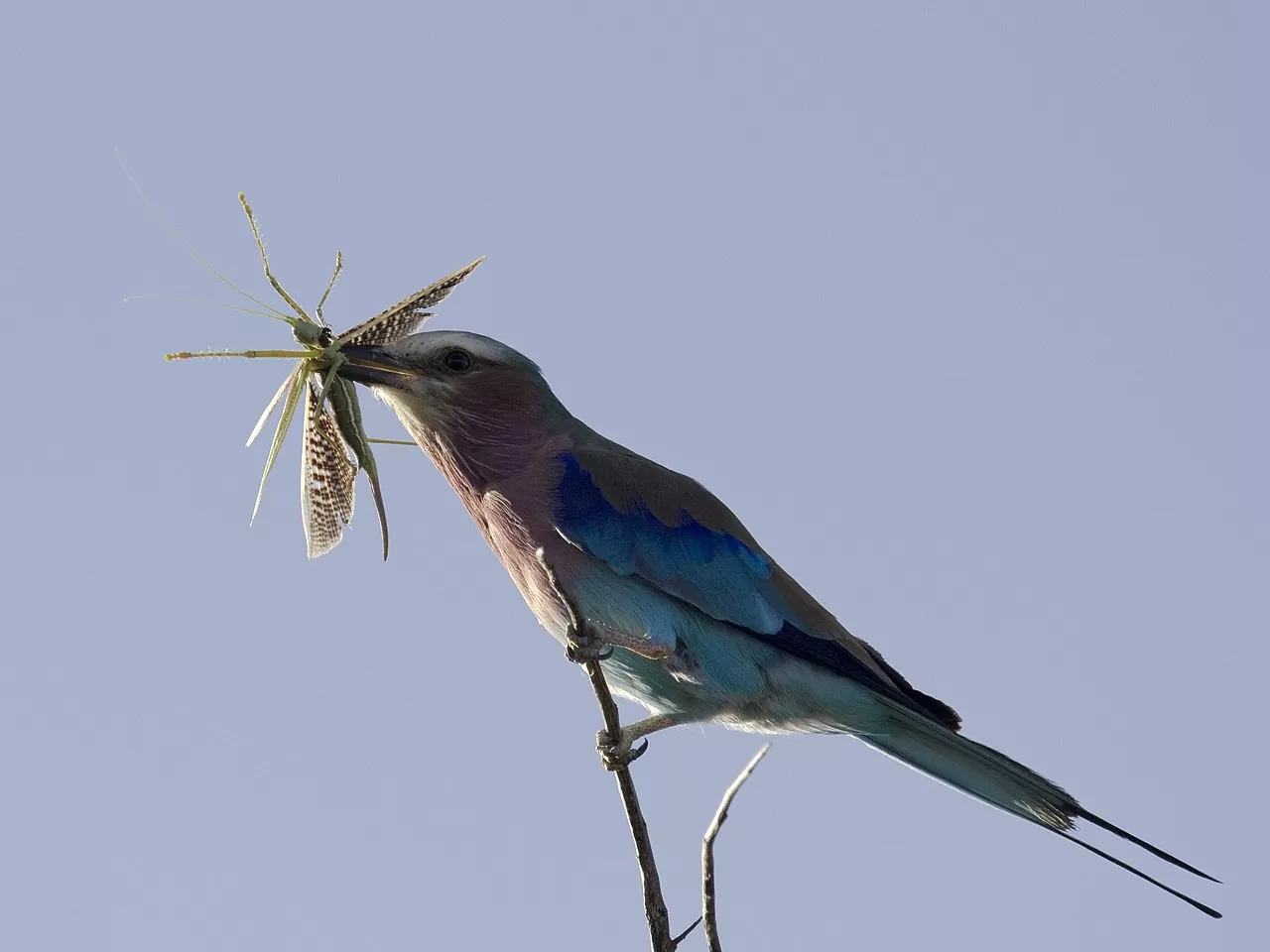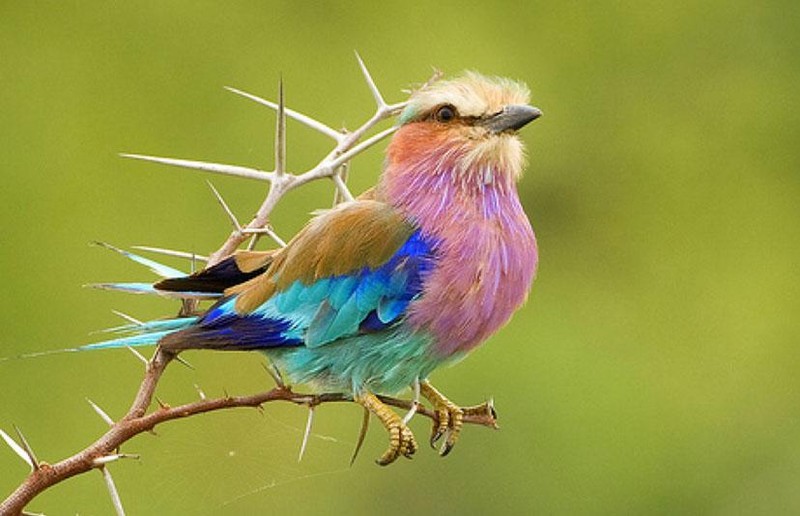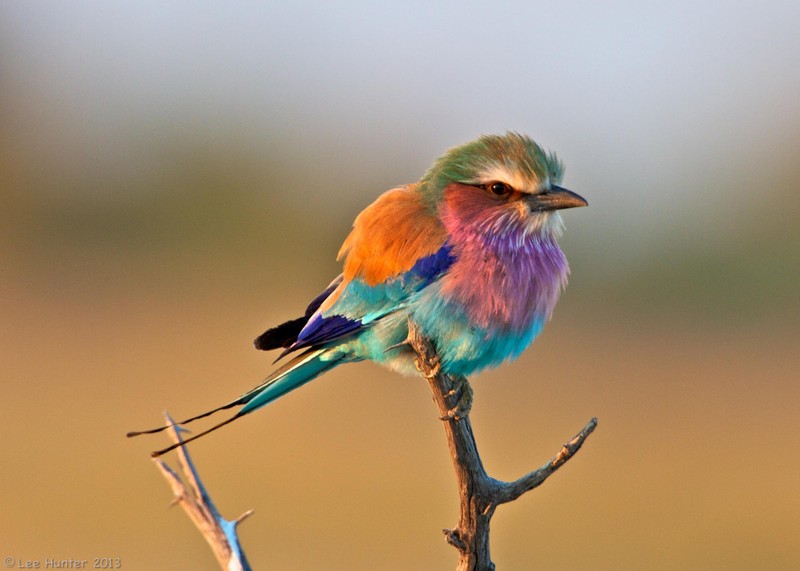Lilac-Breasted Roller: A Colorful Marvel of the African Skies

The enchanting lilac-breasted roller (Coracias caudatus) graces the avian world as a mesmerizing member of the roller family. Thriving in the vast expanse of sub-Saharan Africa and the Arabian Peninsula, this striking bird captures hearts with its vibrant plumage and captivating demeanor.
In the expansive landscapes, the lilac-breasted roller stands as a solitary sentinel, perched gracefully atop trees. Its presence is unmistakable, marked by a brilliant and kaleidoscopic display of colors that playfully catch the eye.

The moniker “lilac-breasted” finds its embodiment in the bird’s exquisite appearance. A regal purple hue adorns its chest, juxtaposed against a pristine white front and neck. The emerald green head forms a harmonious contrast, while delicate shades of pale orange-pink grace the sides of its face, extending gracefully to its chest. A rich tapestry of brown and purple embraces its wings and outer feathers, while the belly boasts a light shade of green. Its beak, black and robust, exudes power, complementing the depth of its brown eyes. Delicate greenish-yellow legs carry the lilac-breasted roller with an air of elegance. This striking symphony of colors is shared by both males and females, uniting them in their resplendent appearance.
The lilac-breasted roller possesses a weight of approximately 104 grams, its stature measuring 36 to 38 cm in length, including a tail that spans 8 to 9 cm. Its wingspan extends between 50 and 58 cm, bestowing an aura of grace and majesty.
Habitat is the canvas upon which this avian masterpiece unfolds. The lilac-breasted roller finds solace in open savannas adorned with trees and shrubs. Open woodlands and savannas also serve as its domain, and it occasionally graces riparian vegetation. This bird appears to evade areas devoid of trees, exhibiting a preference for habitats that resonate with life.
The lilac-breasted roller displays a preference for solitude, often found in pairs or small groups. It is an agile hunter, perching atop dead treetops or power poles, observing its surroundings with keen eyes. Once prey is detected, it descends swiftly, either feasting directly on the ground or carrying its bounty to familiar branches for consumption.
The bird’s menu is diverse, encompassing insects like grasshoppers and beetles, arthropods, scales, bugs, snails, small birds, rodents, and even snakes. Its dietary choices reflect a delicate balance between predator and prey.
The lilac-breasted roller’s reproduction season varies, often spanning from late April to mid-September in Somalia. These birds are known for their monogamous nature and territorial behavior. Nesting occurs within natural tree hollows, typically 5 meters above the ground. They sometimes reuse nests created by woodpeckers or kingfishers, even nesting within termite mounds.
During reproduction, the female lays 2-4 eggs, with both parents taking turns incubating for about 22-24 days. After hatching, the young birds remain under their parents’ care for an additional 19 days before venturing out on their own.
With a broad distribution and stable population, the lilac-breasted roller garners the status of least concern. Its existence graces the African skies, contributing to the splendid tapestry of nature. With a potential longevity of around 14 years, this remarkable bird continues to paint vibrant strokes across the canvas of the avian world.







